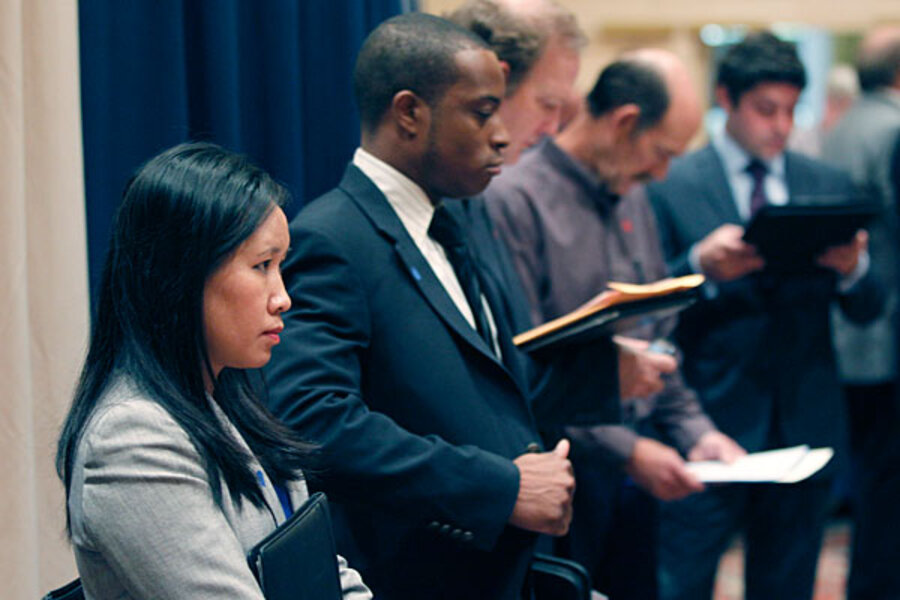So how did that happen? Unemployment rate dives to 8.6 percent.
Loading...
After months of hovering around 9 percent, the US unemployment rate took a sudden turn for the better in November, falling to 8.6 percent.
Call it holiday cheer. Call it relief for workers who value job security. Call it hope for would-be workers without jobs.
It may be all those things, but why did it happen?
The sharp improvement seems puzzling, at least on the surface. The same labor report showing the jobless-rate dive also found that non-farm employers added 120,000 jobs during November. That's OK, but nothing better than other typical months throughout this whole year. Meanwhile the unemployment rate had (with some ups and downs) gone from 9.0 percent in January to that exact same number in October.
Often, economists say 120,000 jobs is just enough to keep the jobless rate from rising, because about that many newcomers can arrive in the labor force in a given month. A hundred thousand jobs is a drop in the bucket, with some 154 million people in the work force.
Also, it's rare for the unemployment rate to move that much in a single month. The last 0.4 percentage-point change, for the record, came about a year ago, in December 2010.
The latest month's puzzle has several explanations. Some are upbeat, signaling genuine progress in the job market. But this is also a case in which the economy's reality may not be as strong as the headline number implies.
First, let's deal with the bad news.
Unemployment can fall for reasons other than people finding jobs. It can also happen when people stop looking for work, in which case they are no longer counted as unemployed members of the labor force. That happened in November in a big way. The labor force shrank by 315,000 people, even though the nation's adult population grew.
Now the brighter news. The number of Americans who have jobs may have risen by a lot more than 120,000 last month. The reason is that the jobs number that the Labor Department emphasizes (the so-called "payroll" number reported by employers) isn't the only job number around.
The unemployment rate is actually based on an entirely different tally of employment, called the household survey. In November, employment rose by 278,000, according to this survey. That's the estimate based on the number of people who said they have a job, when asked by the Labor Department.
Neither the payroll survey nor the household one gives a perfect gauge of the number of jobs the economy is adding or subtracting. But over time, the two tend to tell essentially the same stories.
It's possible that the estimated improvement in unemployment, for November, will be reduced when the Labor Department revises the figures next month.
But some economists say the household survey may currently be giving an accurate signal.
"Over the last four months, the household survey has consistently shown far higher employment growth than the payroll survey," writes Nigel Gault, an economist at IHS Global Insight in Lexington, Mass.
"Combining the household survey evidence with the stream of upward revisions to previous payroll estimates, it does seem likely that the payroll survey is underestimating the improvement in the labor market," he says. "The big picture shows an economy that has picked up steam in the second half of the year."
In fact, the payroll survey revised up its estimate of job gains for September and October (taken together) by about 72,000.
And note that, when the jobless rate fell by the same amount last December, the improvement persisted.
That doesn't mean the job market's hoped-for revival is suddenly complete.
For one thing, the economic recovery still looks slow, dampened by high consumer debt burdens and stock-market worries about financial crisis in Europe. For another, some of the job gains shown in the household survey may be "start-up" employment with uncertain staying power.
Given the scale of the recession's job losses, millions of workers are still unemployed or not even bothering to look for jobs until conditions improve. Economists say that, as job opportunities improve more people will re-enter the labor market, which would put some brakes on the speed of jobless-rate improvement.





